CLOTTED CREAM: An Ancient Tradition That’s SO WORTH THE WAIT!
Clotted Cream is deliciously creamy and the essential companion to a batch of traditional British scones. The one drawback I find to this essential is its price, however. A six-ounce container can range in price from $6 - $40.
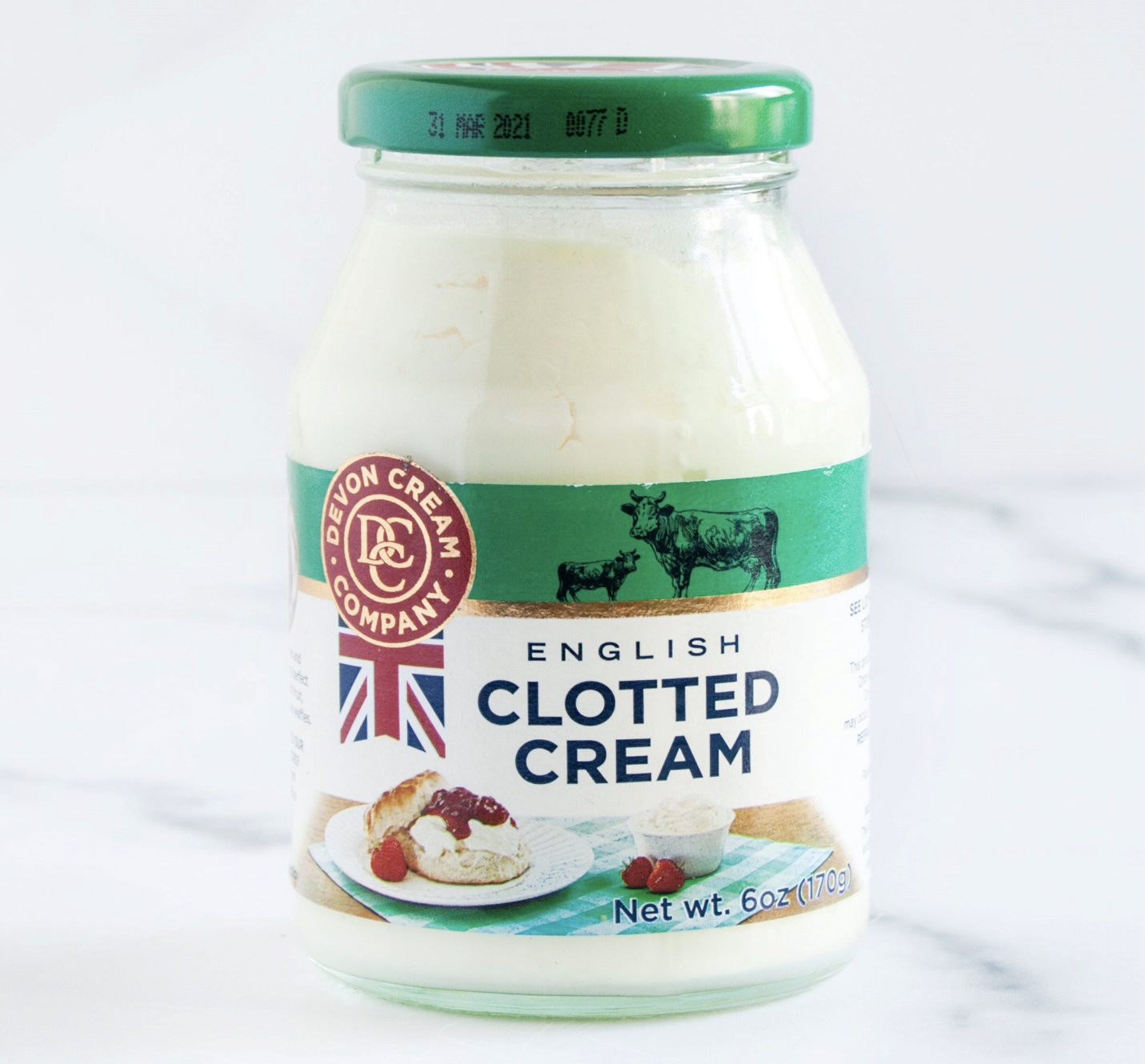
Thank goodness we can find lots of help via the Internet regarding making your own. And all I’ve read on the subject says that while it takes time, clotted cream is easy to make.
But first, what is clotted cream (aka Devonshire cream)? This British tea-time staple is typically served in a little dish alongside a plate of scones. It’s a thick, creamy, white spread, with the consistency of softened cream cheese. It is ever so slightly sweet, but mostly just incredibly creamy.
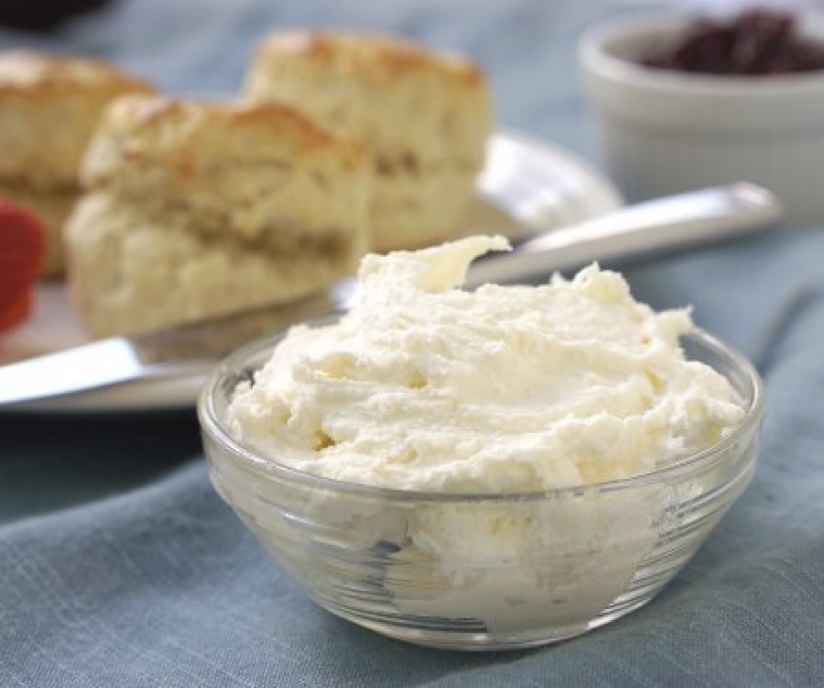
While a bowl of clotted cream might look similar to whipped cream, once you take a taste, you’ll know the difference. Both start with the same basic ingredient: heavy cream. But, for whipped cream, you whip that cream into light and fluffy pillows. Often, you’ll add sweetener and possibly a flavoring, like vanilla, to whipped cream as well.
Clotted cream, on the other hand, is heated and separated. This process produces a thicker, creamy substance. And clotted cream is typically not sweetened. Its big attraction is its creamy texture and how it mixes so well with jams, marmalades, berries, and even truffles. In Britain, people even top their ice cream with it.
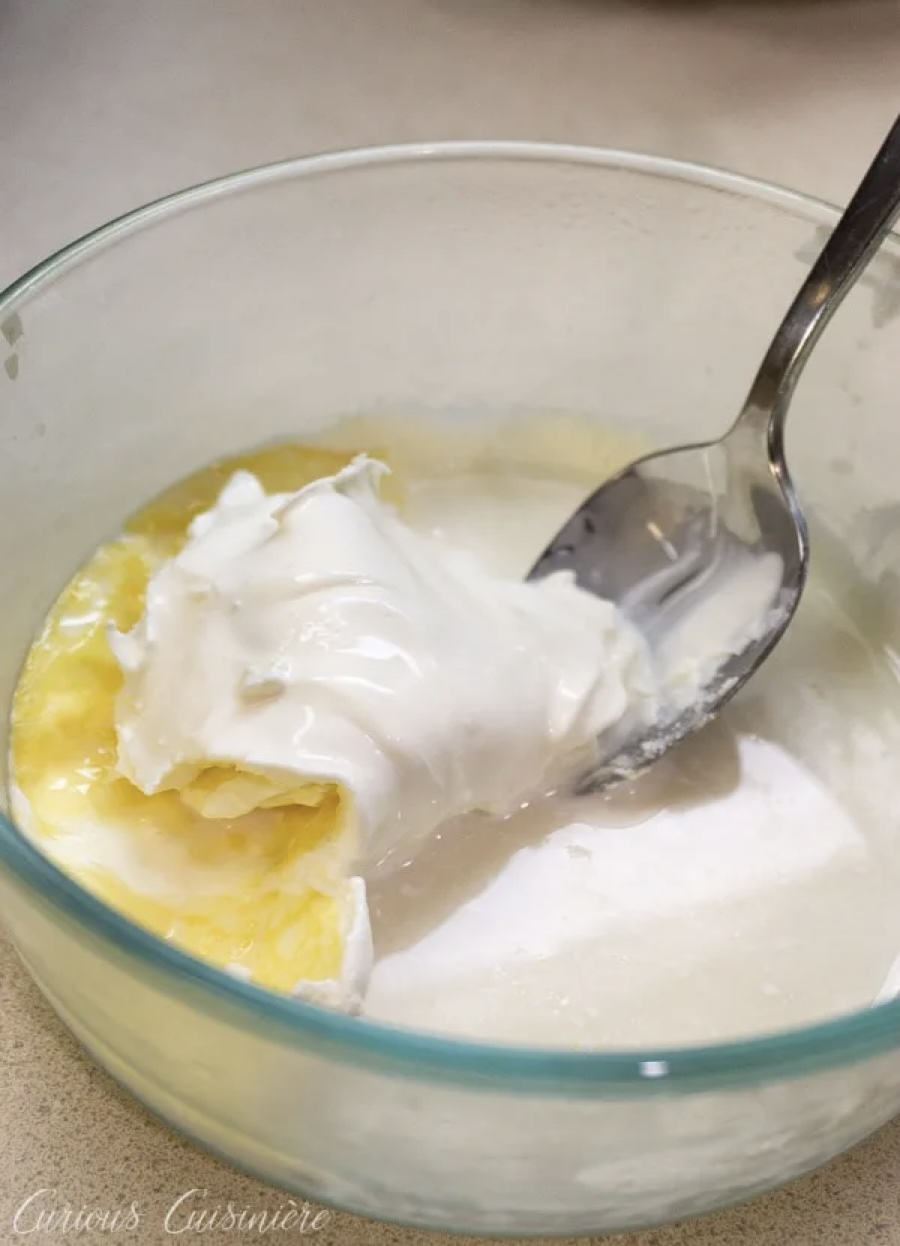
So, if it has a thicker consistency and is more savory, how is clotted cream different from butter? Again, it’s all about the process. Butter results from churning or whipping, clotted cream results from fat separation.
Trust me, you can taste the difference. Sure you can slather a warm scone with butter and heap on some jam. But you’ll have an entirely different experience if you use clotted cream instead.
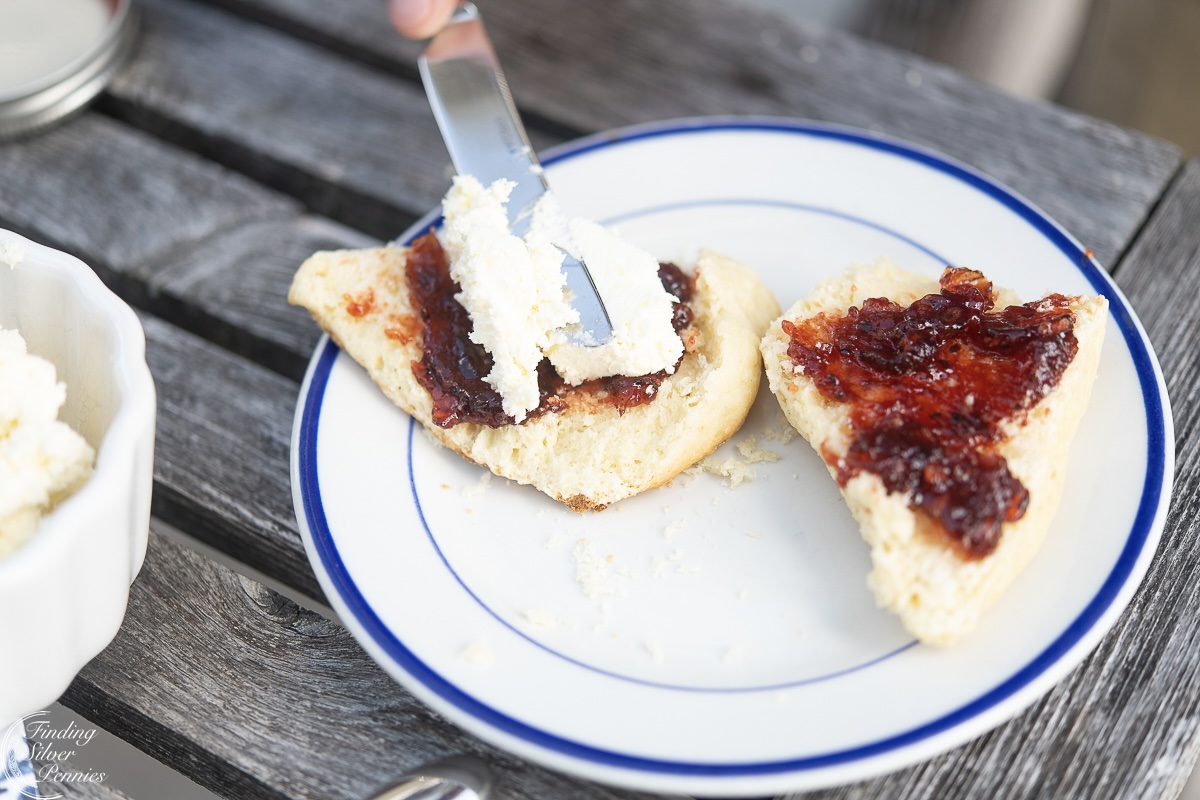
To be honest, the hardest part about making clotted cream is finding the cream. Heavy cream that hasn’t been “ultra-high temperature-pasteurized (UHT),” which increases its shelf life. And darn it, it’s becoming more and more difficult to find Non-UHT cream in the States.
Organic Valley, Horizon, and Dean’s, are three brands that I know of that offer non-ultra-pasteurized heavy cream. You’ll find these and maybe some local dairy brands in Whole Foods and other natural food stores. To find cream that isn’t UHT pasteurized, read the carton. There is usually a note stating it is UHT or simply “pasteurized.” The single word, “pasteurized,” is what you want (see photo below).
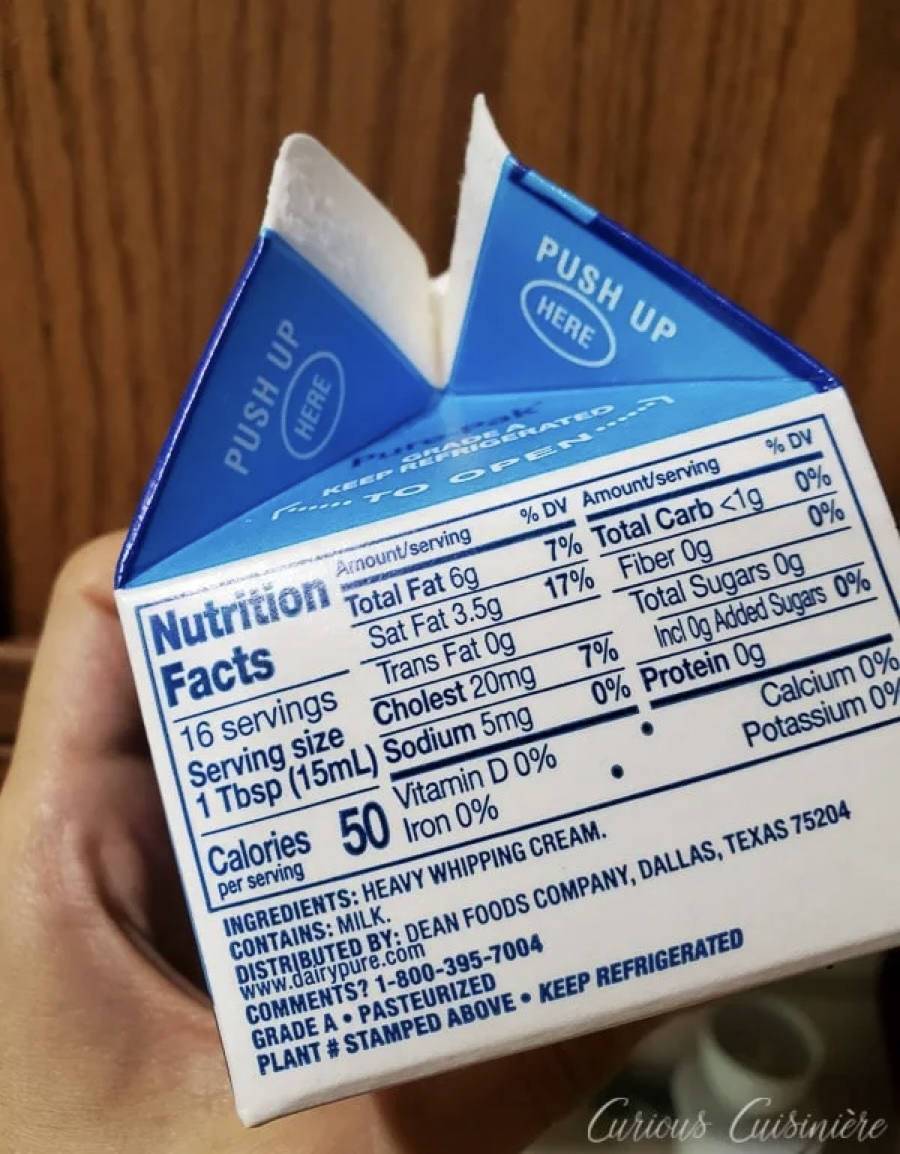
Then after you find your cream, the second hardest part of making clotted cream is the wait. The cream has to be heated slowly for 12 hours, which is easiest to do overnight. Then it is cooled for another 8 hours (or over the next night). Finally, you separate the cream from the liquid, and you have the spread that you have been waiting for.
While making clotted cream takes a long time, the good news is, it’s mostly hands-off, AND, you can make it in your slow cooker! With a little planning and establishing a routine for the process, you can always have this delicacy on hand. I’m telling ya, it’s SO WORTH THE WAIT! Try this recipe and see what I mean.
Slow Cooker Clotted Cream
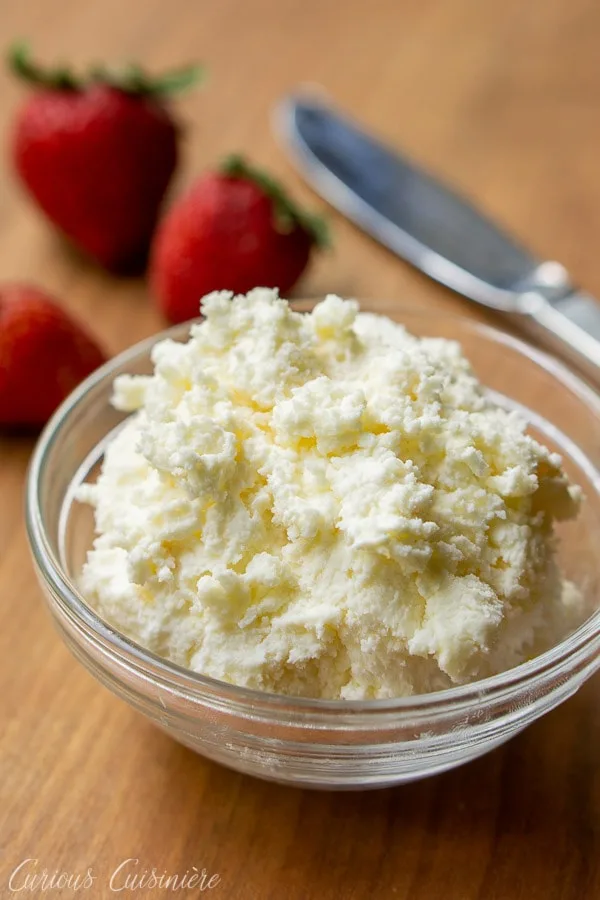
CLOTTING TIME: 12 hours COOLING TIME: 2 hours CHILLING TIME: 12 hours TOTAL TIME: 1 day 2 hours
1/2 pint heavy cream (raw or simply "pasteurized", not UHT pasteurized)
Directions:
1. Add 1 inch of room temperature water to the crock of your slow cooker.
2. Pour the heavy cream into a 1 quart glass bowl (your cream should be æ - 1 inch deep) and place it in the water in the crock. Add room temperature water to the crock as necessary so that the glass bowl floats slightly.
3. Cover the crock with the lid, leaving it tilted so there is about a finger-width crack for steam to escape.
4. Turn your slow cooker on HIGH.
5. Every hour, check your cream for: temperature (using a digital probe thermometer), water level, and color of the skin on the cream. If the temperature is getting too high, lift the lid. If the water level is getting too low so that the glass bowl isnít floating, add more HOT water. (DO NOT add cool or cold water, as you could cause your crock to crack.) If you do not have a thermometer to track temperature, lift the lid once an hour, just to be cautious. Also, check the color of the skin. If it is darkining quickly, your environment is likely too hot. And, check that the water is not boiling (an indication that things are way too hot). Always return the lid to the crock pot cocked, so that there is space for steam to escape.
6. After 12 hours, carefully remove the glass bowl with the cream from the crock and let it cool to room temperature on a wire rack (this will take roughly 2 hours).
7. After the cream has cooled to room temperature, cover it and place it in the refrigerator for 8-12 hours (overnight works well).
8. When you take your cream from the refrigerator after chilling, you should notice two distinct layers: a liquidy, milky layer below and a creamy layer attached to the golden skin on top. Spoon the top thicker layer into a bowl, leaving the thin, milky liquid behind.
9. Stir the thick layer, if you like. This is your clotted cream! If it is too thick for your liking, you can stir in some of the thinner liquid until you get a consistency that you like. (If you find it to be too stiff to stir, let is stand on the counter for 20 minutes to soften.)
10. The thin, milky liquid can be used in baking, like you would milk.
11. Store the clotted cream (and the thin liquid) in separate covered containers in the refrigerator for up to 2 weeks. (Clotted cream can also be frozen and thawed in the refrigerator.)
2. Pour the heavy cream into a 1 quart glass bowl (your cream should be æ - 1 inch deep) and place it in the water in the crock. Add room temperature water to the crock as necessary so that the glass bowl floats slightly.
3. Cover the crock with the lid, leaving it tilted so there is about a finger-width crack for steam to escape.
4. Turn your slow cooker on HIGH.
5. Every hour, check your cream for: temperature (using a digital probe thermometer), water level, and color of the skin on the cream. If the temperature is getting too high, lift the lid. If the water level is getting too low so that the glass bowl isnít floating, add more HOT water. (DO NOT add cool or cold water, as you could cause your crock to crack.) If you do not have a thermometer to track temperature, lift the lid once an hour, just to be cautious. Also, check the color of the skin. If it is darkining quickly, your environment is likely too hot. And, check that the water is not boiling (an indication that things are way too hot). Always return the lid to the crock pot cocked, so that there is space for steam to escape.
6. After 12 hours, carefully remove the glass bowl with the cream from the crock and let it cool to room temperature on a wire rack (this will take roughly 2 hours).
7. After the cream has cooled to room temperature, cover it and place it in the refrigerator for 8-12 hours (overnight works well).
8. When you take your cream from the refrigerator after chilling, you should notice two distinct layers: a liquidy, milky layer below and a creamy layer attached to the golden skin on top. Spoon the top thicker layer into a bowl, leaving the thin, milky liquid behind.
9. Stir the thick layer, if you like. This is your clotted cream! If it is too thick for your liking, you can stir in some of the thinner liquid until you get a consistency that you like. (If you find it to be too stiff to stir, let is stand on the counter for 20 minutes to soften.)
10. The thin, milky liquid can be used in baking, like you would milk.
11. Store the clotted cream (and the thin liquid) in separate covered containers in the refrigerator for up to 2 weeks. (Clotted cream can also be frozen and thawed in the refrigerator.)
Recipe formatted with the Cook'n Recipe Software from DVO Enterprises.
 Alice Osborne
Alice Osborne
Weekly Newsletter Contributor since 2006
Email the author! alice@dvo.com
